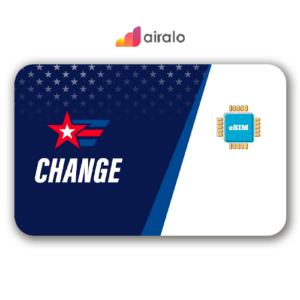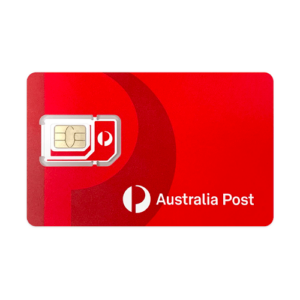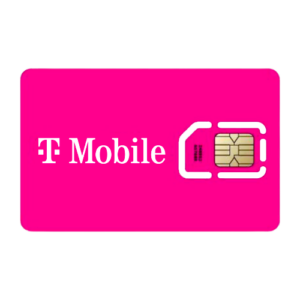Stay connected while you travel through the USA with the best value travel SIMs and roaming deals.
The best SIM cards for travelling in the USA
Roaming in USA

Miley Cyrus wants to party there, Bruce Springsteen was born there… and a whole lot of Australians travel to and through the United States of America for work or pleasure in any given year. If heading to the land of free (calories) and the home of the Braves (and other sports teams) is in your plans, it’s wise to sort out how you’re going to stay connected while there without breaking the bank – except maybe at Las Vegas if that’s your style.
There’s certainly no shortage of options for travellers to the USA looking for travel SIMs, eSIMs and roaming options; this guide will highlight some of the best deals you can pick from to get the right balance between price, inclusions and convenience.

Best eSIM for USA
Airalo Change
Airalo’s eSIM first business model naturally includes the USA with easy options available from just 7 days to 30 days at prices ranging from US$4.50 (7 days, 1GB data) up to a very reasonable US $42 (30 days, 20GB). The ease and practicality of an eSIM can’t be understated here, as there’s no fiddly waiting around for a SIM card to appear or disaster if you drop it as you’re trying to do the SIM swap from your plane seat. If you’re also considering wider North American travel, Airalo also offers an AmericanMex package that adds Canadian and Mexican coverage to the mix. That package is slightly more pricey than just plain USA coverage, however.
The catch here – as it always is – is that you must have an unlocked, eSIM-capable handset to use Airalo at all, as the company does not offer traditional physical SIM cards. That’s still largely the province of somewhat newer, mostly premium phone handsets, so if you’re using an older or especially a budget phone, you may not be able to use the service.
Best USA Travel SIM
Australia Post International Roaming
The simple reality for physical travel SIMs is that they’re basically never the best option for affordability; what you’re paying for is flexibility. Where this gets tricky for travellers to the USA wanting to roam is that there’s only a few networks that will deal with tourists at all, thanks to the strong focus within the USA for contracted phone plans over prepaid ones in that market. As such, there’s fewer physical SIM card options than you might think, and most of them are fairly poor value, either requiring a rolling credit balance or charging some outrageous data or SIM fees.
The Australia Post International Roaming SIM thinks differently. Quite differently, actually, charging just $5 for 30 days of coverage. That doesn’t cost much, and you get an absolute bare-bones service with just 50 minutes of calls, 50 texts and 50MB of data – which won’t go far. The trick here is to match it up with public and hotel Wi-Fi as needed, plus offline loading of important data like maps, offline streaming services and the like.
Best Australian SIM plan for USA roaming
Vodafone $5 Roaming
Travel to the USA without a roaming deal in place on a postpaid plan and in many cases, you will find you mobile may work.
You’ll also find on your return that you’re faced with a serious mobile bill if you’re opting to go on the quite painful PAYG rates that most of them charge. Thankfully there are better options, and Vodafone’s $5/day international roaming deal remains the one that offers the best overall value.
The proposition is quite simple; pay $5 extra per day on top of your existing Vodafone postpaid contract and you get access to the call, text and data inclusions of your plan – though not the endless shaped data speeds on most plans once your data quota is exhausted. Here’s a range of suitable Vodafone plans to pair with its $5 international roaming deal:
One detail to be wary of here is that while it’s super convenient to not have to swap SIMs at all and keep your Australian phone number and connections, it’s not terribly cost efficient if you’re heading down route 66 (or anywhere else in America) for any serious length of time. Vodafone only charges you that $5 extra when you actually use your phone, but over a fortnight’s holiday that’s an extra $70 on your bill with no additional data or services beyond access to speak of.
Vodafone isn’t the only player in the roaming space worth considering; here’s a range of telco plans that have international roaming options available at additional cost:
Best local SIM for USA
Best Telco USA Roaming Deal: T-Mobile Prepaid
Airalo’s eSIM first business model naturally includes the USA with easy options available from just 7 days to 30 days at prices ranging from US$4.50 (7 days, 1GB data) up to a very reasonable US $42 (30 days, 20GB). The ease and practicality of an eSIM can’t be understated here, as there’s no fiddly waiting around for a SIM card to appear or disaster if you drop it as you’re trying to do the SIM swap from your plane seat. If you’re also considering wider North American travel, Airalo also offers an AmericanMex package that adds Canadian and Mexican coverage to the mix. That package is slightly more pricey than just plain USA coverage, however.
The catch here – as it always is – is that you must have an unlocked, eSIM-capable handset to use Airalo at all, as the company does not offer traditional physical SIM cards. That’s still largely the province of somewhat newer, mostly premium phone handsets, so if you’re using an older or especially a budget phone, you may not be able to use the service.
It can be highly beneficial to grab a local SIM in Europe for your travels, because typically local rates are cheaper and offer larger data inclusions than just about any travel SIM or roaming deal. There’s the added benefit for the EU specifically here too that member states (plus Iceland, Liechtenstein and Norway) all support cross-border roaming at no additional cost. Look for deals from some of the bigger cross-European Telcos such as Orange or Vodafone to get the best deal for the right price.
You’ll find no shortage of local SIM providers in every single major European airport if you favour convenience, though often they sell “tourist” specific SIMs with a slight surcharge in return for that easy pickup.
If you’re staying longer in a specific country, it’s worth researching local options and storefronts to see if you can get a prepaid SIM through them. Be careful, however, as you don’t want to get stung by a monthly plan that’s no use to you once you’ve left Europe, and some providers in some countries won’t accept credit card payments for some mobile services if the credit card itself isn’t local.
If your current handset doesn’t support eSIM, then sadly, the answer is no. You absolutely need the internal circuitry for eSIM support to be present on your phone in the first place.
If your phone does support eSIMs, then it’s quite easy to set up your eSIM before you travel. We’ve got a handy guide to setting up eSIMs for Apple iPhone and Android here.
The absolute cheapest way to “roam” when overseas is to throw your phone into a canal the moment you land. But that’s environmentally unsound, so don’t do it.
The second cheapest way is to use public Wi-Fi where available. In Europe, that’s a lot of places, including most accommodation venues. Instead of throwing your phone into a canal, switch off its roaming data (or data altogether) and switch to using Wi-Fi plus services such as Facetime, FaceBook Messenger and WhatsApp as your temporary “phone” number while you’re travelling. Use the offline maps capability of services such as Google Maps for navigation, load up on offline streaming services and music, and you can survive without having to pay anything extra at all for data.
Bear in mind, however, that public networks sit outside your control, and you never know who might be doing a little not-so-idle-not-so-friendly packet sniffing to get hold of your data. If you’re planning on relying on public Wi-Fi while travelling, investing in proper secure VPN access is a must.
Related Articles






